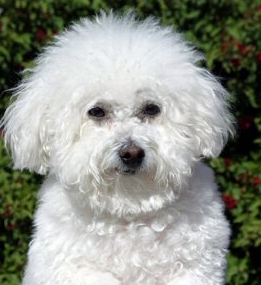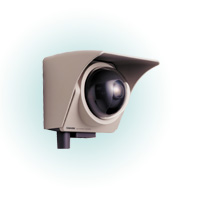As I time goes by, it gets harder and harder for me to sell a llama. This is a quandary, since we have decided we need to reduce our herd in order to allow us to do some genuine traveling in the next few years (something other than llama shows, weddings and funerals.)
I have a beautiful cria born this fall who might be a good show prospect. His fiber is to die for, and the color of light caramel or clover honey and cream. It is very close to the color of our wonderful llama, Tia Juanita. I covet her fiber which gets used or sold every year. This little boy has much finer fiber, and is liable to remain here in the “fiber herd” that I am building in my mind for the future. He also reminds me of Tia’s first baby, a beautiful little boy who we sold, and who I will always miss. The fact that this little guy lets me pick up his feet and is nearly halter broken at only three months of age is also a plus. I know if we show him and someone makes us an offer, he needs to find a nice home where he can hopefully pass on his wonderful genetics. But I can see this will be hard, both emotionally and practically. Unless we make it to some more shows than we have recently, the problem may not come up. (Is this a self-fulfilling prophesy?)
I am reminded of our visit many, many years ago to Llama Woods in Oregon. We had heard a rumor that if Iris Christ did not like you, then she would not sell you a llama. I suppose I am like that too, maybe more so now than ever. I have become more protective of my charges over the years. Of course, Iris could afford to keep every llama if she wanted to. And her llamas were in such demand at that time that she could afford to be choosey.
 We arrived at Llama Woods with another couple who were our friends and llama-mentors. Most of our time that first day was spent with Pam, Iris’s long time friend and farm manager. While the visit and the day was all that we could have imagined, I remember the chilly reception given us by Iris’s dogs, two Bichons Frises. Despite their perfectly quaffed pom-pom apearance, they took very seriously their guardianship of the castle. Underneath all the white puff, they were sturdy little dogs. They barked and yipped and acted for all the world like they could make quick hamburger out of our ankles. I did not feel all too comfortable near the house and yard that served as the office. I was happier out in the llama pastures where the llamas were much less judgmental. I couldn’t help but hope that Iris did not use her dogs to divine for her whether to sell to someone or not.
We arrived at Llama Woods with another couple who were our friends and llama-mentors. Most of our time that first day was spent with Pam, Iris’s long time friend and farm manager. While the visit and the day was all that we could have imagined, I remember the chilly reception given us by Iris’s dogs, two Bichons Frises. Despite their perfectly quaffed pom-pom apearance, they took very seriously their guardianship of the castle. Underneath all the white puff, they were sturdy little dogs. They barked and yipped and acted for all the world like they could make quick hamburger out of our ankles. I did not feel all too comfortable near the house and yard that served as the office. I was happier out in the llama pastures where the llamas were much less judgmental. I couldn’t help but hope that Iris did not use her dogs to divine for her whether to sell to someone or not.
The second day, we had begun to negotiate the purchase of one of Iris’s males, a Willie K son named Captain Curry. Our friends were also interested in a couple of llamas, including a future herd sire. We had entered into the realm of serious buyers now, not just sight-seers who were not destined to be worth the time that was spent on them. We had lunch with Iris and her husband Don on their patio at the farm. While at our home, our silverware saved for holidays is simply our good stainless, it was not surprising that this Vanderbilt heiress served our casual, home-made lunch on gold-plated dinnerware. Their house, however, was a typical ranch-style home on the outside, nothing very pretentious. I think the house and the older farm house/office may have been on the property when they purchased it. While I did not go in the house, a glance through the back door confirmed that inside it was impeccably decorated. Perhaps done personally by Martha Stewart herself, I thought. After lunch, our friend, who was much higher on the llama social ladder than we, was invited inside to see some of Iris’s art collection. We remained on the patio enjoying the warm Oregon spring day, wonderfully devoid of the humidity that plagues our home in Indiana. The whole time we ate and conversed with our hosts, their Bichons were alternating between begging for their owner’s attention, and stealthily sniffing our feet and ankles. At first I was worried a sudden move would illicit an attack, but the dogs minded their manners. Perhaps they were taking cues from their masters that we were to be treated as guests, since we were dining with them. By the end of lunch the dogs were a little less concerned with our presence and I felt a little more relaxed around them.
On our third day, we returned with our decisions on which llamas to purchase. Today, the Bichons seemed genuinely happy to greet us at the office door. No doubt they remembered us from lunch the day before. I recall sitting on the large overstuffed couch in the office waiting area, which was once the large family room in this remodeled farmhouse. My husband and I were finalizing travel plans for our new herd sire, and going over paperwork and the purchase contract. The year was 1995, and the price for a fine llama, especially one bred and owned by Llama Woods, seemed nearly astronomical. This was a huge investment for us. I remember sitting on the couch, writing out the check with an awful lot of zeros in it. The Bichons were happily sitting next to us, asking for attention and enjoying the excitment. They now accepted us and were our trusted buddies. What a difference from two days ago! I am sure we smelled the same, whether that was good or bad from a dog’s point of view, I don’t know. But they certainly knew us now and included us in their circle of trust. Apparently, Iris felt the same, as she not only consented to the purchase of our beloved Captain Curry, but also suggested a female to go with him. I have often wondered if the dogs accepted us because Iris had, or if it was the other way around. Or did they respond especially to that “check writing moment?” I’ll never know, but the visit and the critical acclaim of those two dogs will always remain in my memory. Perhaps I need to get a Bichon Frise to help me determine who should purchase one of my llamas!
—laura



